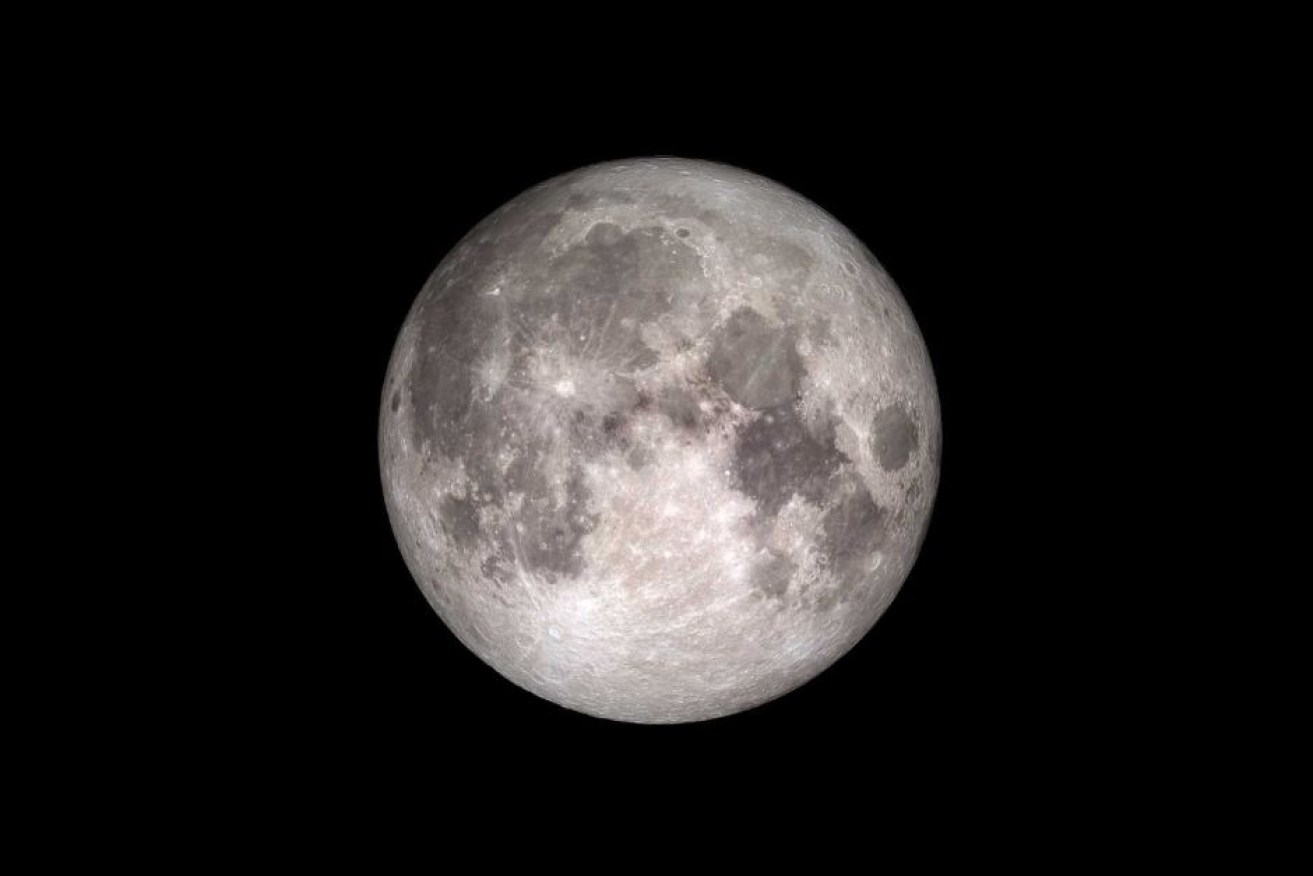Moon is wetter than we thought and ‘might sustain humans’

Researchers say the discovery could show the Moon is more like Earth than we thought. Photo: NASA
Once thought to be dry, the Moon may have much more water than previously thought, according to a new study that could turn the dream of inhabiting the Moon into a very real possibility.
Researchers from Brown University in the US decided to re-examine volcanic glass beads that were brought back by the Apollo 15 and 17 missions in the 1970s.
Their findings have suggested that water could be widespread beyond the Moon’s poles, where it was already known to exist.
Astronomer Bradley Tucker said the study focused on the volcanic areas on the Moon.
“When you look at the Moon, those dark grey areas were actually the most recent volcanic lava flows,” Dr Tucker said.
“And when the study looked at this they showed that all of these areas have a substantial amount of H20 – of water.”
Where has this water come from?
Crucially, Dr Tucker said that water could potentially stem from a self-sustaining source.
“Where has this water come from?” he said.
“If it’s come from things falling on to the planet, well then it’s not self-sustaining.
“But if it really is its own system, if underneath the mantle – the outer level of the Moon – it’s active, then the magma and the lava that has come up, the activity from this Moon, bringing water to it means it’s almost itself a self-sustaining system – almost like the Earth.”

Astronaut Gene Cernan drives the Lunar Roving Vehicle during the Apollo 17 mission, on December 11, 1972. Photo: NASA
The beads researchers re-examined were formed when magma burst up onto the surface and crystallised billions of years ago, trapping the water inside them.
In the new study, published in Nature Geoscience, scientists re-examined the Apollo samples using more recent satellite data to search for signs of water-bearing beads.
The satellite data was collected using the Moon Mineralogy Mapper instrument on the Chandrayaan-1 orbiter.
When they found that the volcanic deposits were widespread, it suggested that the material inside the Moon might be wetter than previously believed.
However, while the study suggests there is an abundance of water within the Moon, it remains hard to know just how much there is.
Does this make the Moon more liveable?
Dr Tucker said the findings could have positive consequences in the near future for plans of using the Moon as a refuelling and regrouping base for missions heading out to Mars.
“Or even [before being] sent out to other distant planets, or distant parts of our solar system,” he said.
Before the study, Dr Tucker said the main problem with using the Moon as a base was its lack of natural resources.
“But if it has hydrogen and it has oxygen, then we can use that either as oxygen fuel – O2 that we see in those rocket burnings,” he said.
“Or even hydrogen fuel, that we’re trying to get cars to run. Or use it as something to breathe and drink.
“It means that we can actually harvest the Moon’s natural resources to build a human base on it.”
Dr Tucker said the discovery could mean humans would be able to start inhabiting the Moon as early as by the next decade.
“You can go out tonight and see the Moon just after sunset and realise that those dark areas are volcanic lava flows that might actually have water, that might sustain humans,” he said.
“I think that’s pretty cool.”
-ABC








